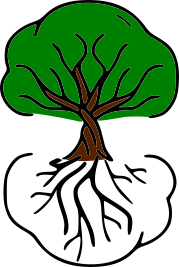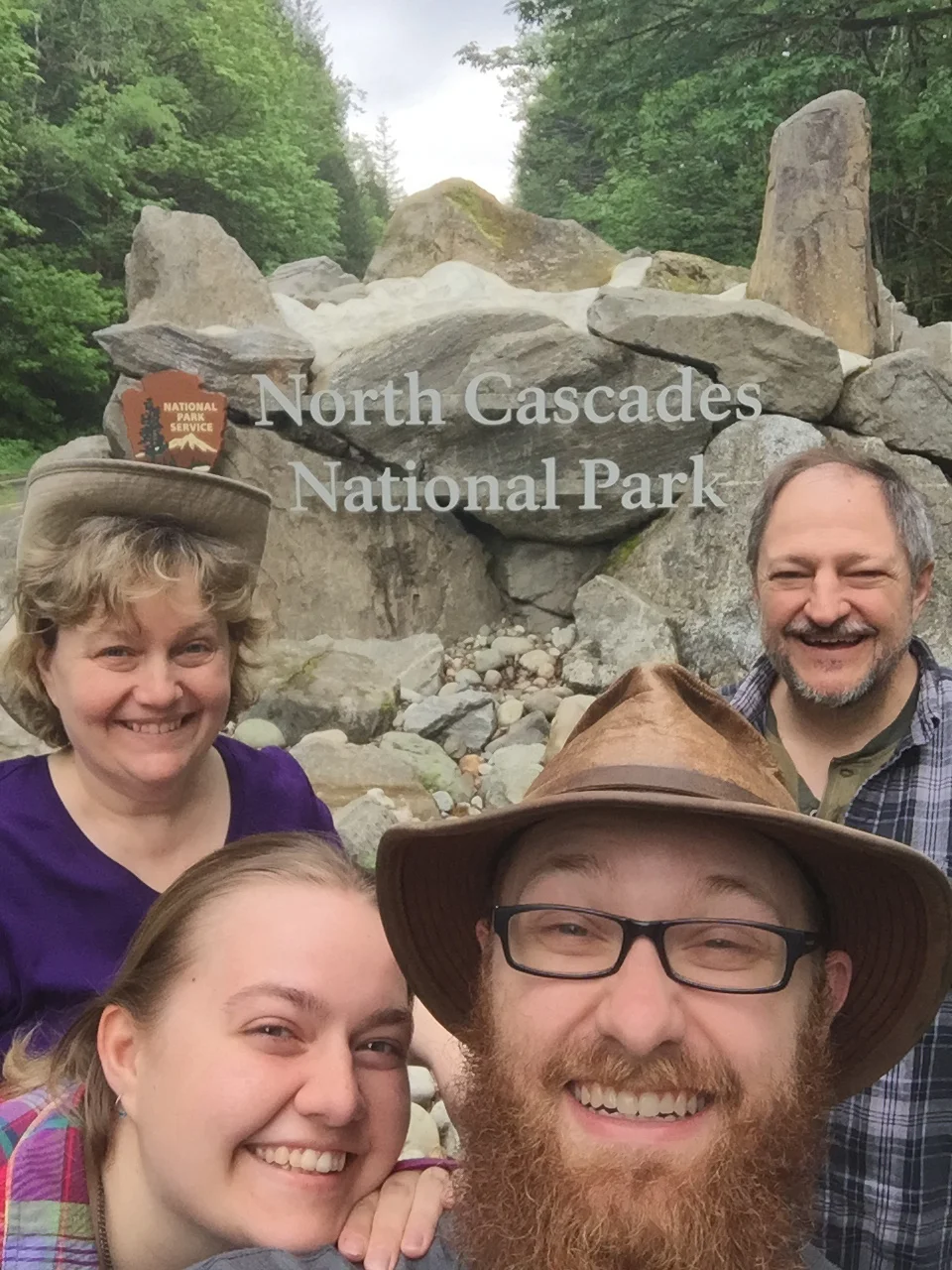Having moved into the North Cascades Eco-region in July for the graduate residency program, these mountains are finally starting to feel like home. Month after month I have been engaged in the cycle of the seasons, the habits of natural neighbors and the rhythms of the Skagit. So when I knew my family was coming for only a three day visit, I panicked. How can I show them all that I have learned about this amazing place in only three days? I couldn’t, and I didn’t, but we crammed as much as we could and went to four main locations for an amazing adventure: around the Environmental Learning Center, the Methow Valley, theSalish Sea and the City of Seattle.
While my family feels at home in the outdoors, Washington is a completely different beast than our wilderness. Coming all the way from Pittsburgh, PA my parents (Kurt and Pam) and older sister (Abby) reminded me of my general first reaction when I arrived: “Washington is just like Pennsylvania, except exaggerated. The mountains are higher, the rivers purer and the trees much, much taller.” My mother even remarked that it was as if I was living in a fairy tale, the scenery taken right out of a book.
Our first stop on this fairy tale adventure was a place I don’t even notice anymore. On my daily commute to work I drive past the Gorge Creek Falls, an amazing 242 ft. cascade. Since I see it every day, it fell into the backdrop of the commute. Only when my family was seeing it with new eyes, did I stop and remember how beautiful of a place I get to study in.
Dad enjoying the view at Gorge Creek Falls.
After arriving at the Environmental Learning Center, we hit the Diablo Lake Trail to get a taste of wilderness. Just like Gorge Creek Falls, I take students in Mountain School on parts of this trail weekly so it is very much my backyard. Usually, with students, I encourage the interruption of any lesson or activity if something “neat” is happening in nature. More often than not this results in stopping the Seed Game for deer or the Waterfall hike for woodpeckers. Very rarely do we interrupt what we are doing more than three or four times a day.
Without such a large trail group my family and I were able to experience so much more of the woods. I felt like we wouldn’t take three steps before one of them would say “Ben wait up! I found something!” While we didn’t go nearly as far as I originally had planned, what we did experience was at such a deeper level than ever I had experienced.
Enjoying the trail.
We also had a strange mix of roles. Growing up, I was always the one to ask questions: “What’s that? What’s this called? Why is it doing that?” This time, however, they were the ones questioning me: “What sound is that? What is this flower called? Why is that bug flying like that?”
After coming back from the Diablo Lake trail we went to what the graduate students call Buster Brown lookout. Located very close to the Buster Brown campground, this five minute trail is sinfully easy for the amazing views it provides. After following a service trail most of the way you are greeted with a view of cascades, mountains and the Skagit Valley.
Abby looking out at Buster Brown.
This picture above is one of my favorites of my sister. Usually, my sister is the very definition of emotion; getting very excited (and loud) about amazing things. Here though, she went to the top and just said “wow…”
Unfortunately we couldn’t stay for much longer because day one also included the Methow Valley.
The cute couple finding a wood pecker.
Methow Valley
When all of the graduate students arrived in July, our Professor Joshua Porter told us to “visit the Methow Valley as much as you can, because you are going to miss it when the pass closes in the winter.” I didn’t pay much heed this, especially since I couldn’t pronounce it at the time (pronounced “Met-How” not “Meth-Ow” as my cohort always reminded me). But after our 6+ hour road trip to the Methow Valley for the Winter Natural History Retreat, I was very ready to be able to visit the valley after only an hour of driving.
Because of the dangers of avalanches in deep winter, WA SR 20‘s Washington Pass closes usually in November and doesn’t open until early May. In one of the luckiest moments in my year of residency so far, the pass opened up hours before we went over.
The first few miles had my sister making fun of Washington saying “There’s no snow on the ground, why did they close the pass?” After just a few miles more we started to see the first patches of snow. Patches turned into a cover. The cover grew and grew until everything but the road was covered in snow that was higher than my car!
Washington Pass on the first open day of the season.
Just as quickly as it came, the snow disappeared to the Methow Valley in bloom. When I had traveled there in the summer and fall, most of the Methow had patches of green but was mostly covered in deep browns and reds. In the spring the valley feels like a completely different place.
An afternoon in the valley is never enough, but we tried to cram in as much as possible. Visiting the towns of Mazama, Winthrop and Twisp my family got a taste for how the east side of the mountains compares to the west. After a long day in the mountains, we went back for some sleep before visiting the sea.
Dad finding a hawk in the Methow Valley
Salish Sea
Encompassing all of the water in the Strait of Georgia, the Strait of Juan de Fuca and the Puget Sound, the Salish Sea was first coined by Bert Webber as a way to“raise consciousness about taking care of the region’s water and ecosystems.” Named after the Coast Salish people, this international body of water is as expansive and wild as the North Cascades Mountains. Not only is the sea a beautiful place to visit, but it is also a reminder that nature doesn’t see national boarders, just natural ones.
Pittsburgh is the city of bridges, hosting 446 bridges over the three main rivers that run through it. So when I said that we would be taking a ferry to Orcas Island in the Salish Sea, I could see the confusion on my family’s faces. They were too polite to ask the question “Why isn’t there a bridge to it? That’s how you cover water!” My sister was especially gracious to travel by ferry since she is someone who doesn’t have sea legs in the slightest.
Waiting for the ferry.
“It’s amazing that you can one day be in the heart of the mountains, with snow piled high and the next day playing in the ocean!” was my father’s remarks when on the island. Growing up in Singapore the ocean is a second home to him. The main difference between the two places, however, is the temperature. Excited to wade through the tides, he tried to tough it out but eventually ran out saying “It’s too cold and rocky!”
While Mom and Ab were napping, however, Dad and I did have an little excursion during low tide. Barnacles licking their “lips,” sea gulls disputing with geese and piles of drift wood to climb on made for an amazing afternoon. The “star” of the show was the very healthy sea star we found!
Dad and I adventuring on Orcas Island.
Healthy sea star!
After our excursion Abby joined the two of us for the climb up Mount Constitution. It was breathtaking to experience how far you can see on the island’s tallest point. Most, if not all, of the Salish Sea was in view along with the North Cascades.
Dad and Abby looking out on Mount Constitution on Orcas Island.
City of Seattle
Because of early flights, we only got to experience Pike Place in Seattle. While just one part it gave us a taste for how much different the city can be than the natural places we went to.
Traveling through Pike Place Market.
While driving home after dropping them off at the airport, I felt rejuvenated and excited about learning more about the home I just shared.
*I originally wrote this article for Chattermarks, the official blog of the North Cascades Institute. You can find all of my posts on Chattermarks here.













